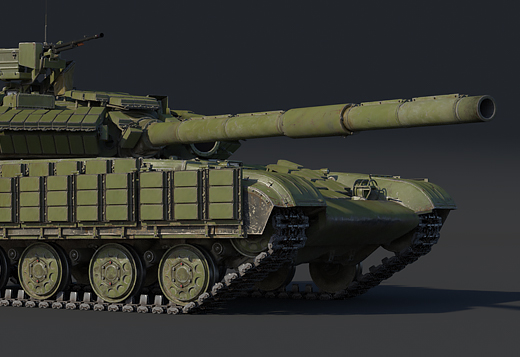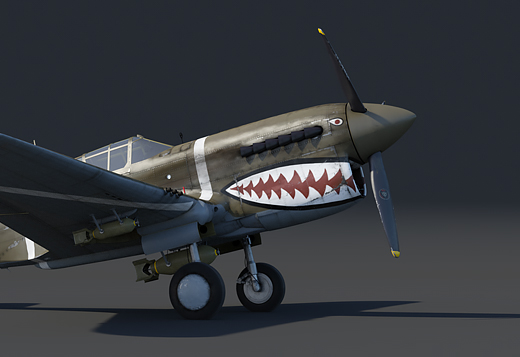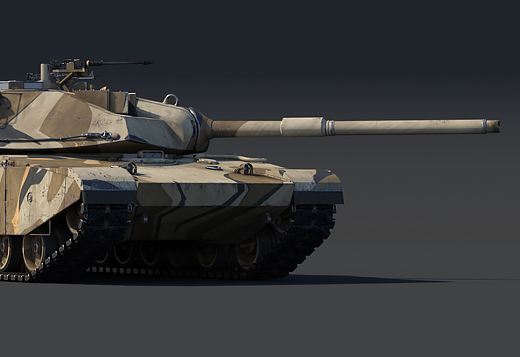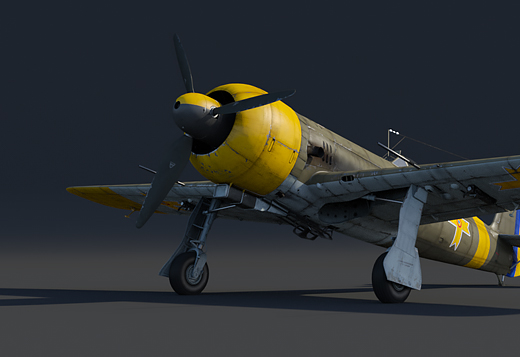
- For PC
- For MAC
- For Linux
- OS: Windows 10 (64 bit)
- Processor: Dual-Core 2.2 GHz
- Memory: 4GB
- Video Card: DirectX 11 level video card: AMD Radeon 77XX / NVIDIA GeForce GTX 660. The minimum supported resolution for the game is 720p.
- Network: Broadband Internet connection
- Hard Drive: 23.1 GB (Minimal client)
- OS: Windows 10/11 (64 bit)
- Processor: Intel Core i5 or Ryzen 5 3600 and better
- Memory: 16 GB and more
- Video Card: DirectX 11 level video card or higher and drivers: Nvidia GeForce 1060 and higher, Radeon RX 570 and higher
- Network: Broadband Internet connection
- Hard Drive: 75.9 GB (Full client)
- OS: Mac OS Big Sur 11.0 or newer
- Processor: Core i5, minimum 2.2GHz (Intel Xeon is not supported)
- Memory: 6 GB
- Video Card: Intel Iris Pro 5200 (Mac), or analog from AMD/Nvidia for Mac. Minimum supported resolution for the game is 720p with Metal support.
- Network: Broadband Internet connection
- Hard Drive: 22.1 GB (Minimal client)
- OS: Mac OS Big Sur 11.0 or newer
- Processor: Core i7 (Intel Xeon is not supported)
- Memory: 8 GB
- Video Card: Radeon Vega II or higher with Metal support.
- Network: Broadband Internet connection
- Hard Drive: 62.2 GB (Full client)
- OS: Most modern 64bit Linux distributions
- Processor: Dual-Core 2.4 GHz
- Memory: 4 GB
- Video Card: NVIDIA 660 with latest proprietary drivers (not older than 6 months) / similar AMD with latest proprietary drivers (not older than 6 months; the minimum supported resolution for the game is 720p) with Vulkan support.
- Network: Broadband Internet connection
- Hard Drive: 22.1 GB (Minimal client)
- OS: Ubuntu 20.04 64bit
- Processor: Intel Core i7
- Memory: 16 GB
- Video Card: NVIDIA 1060 with latest proprietary drivers (not older than 6 months) / similar AMD (Radeon RX 570) with latest proprietary drivers (not older than 6 months) with Vulkan support.
- Network: Broadband Internet connection
- Hard Drive: 62.2 GB (Full client)
In short: an early bomber in the Japanese research tree, a superb aircraft for learning the basics. 450kgs of bomb load, 2 turrets, non-retractable landing gear that makes landing an easier task.
The Ki-32 is a Japanese light bomber developed in the mid 1930s by the Kawasaki company to replace the outdated Ki-3 bomber. Used extensively in the Asian theatre of war before and after WWII, the Ki-32 is now zeroing in to the Japanese aviation tree with the upcoming War Thunder 1.79 update!
Development of the Ki-32 began in May 1936 after the Imperial Japanese Army asked Mitsubishi and Kawasaki to build a new light bomber. The IJA hoped to replace the outdated Ki-3 biplane bomber by the end of 1936.
Although both companies designed very similar aircraft, the distinct difference between the Kawasaki Ki-32 and the Mitsubishi Ki-30 was the engine. Mitsubishi preferred reliable radial engines, but Kawasaki risked installing their Ha-9-IIb liquid-cooled inline engine.
The first Kawasaki Ki-32 prototype took to the skies in March 1937 and showed comparable performance to Mitsubishi’s Ki-30, which had made its maiden flight just a month earlier.
Unfortunately for Kawasaki, their risky choice of engine exhibited cooling problems. And by the time the cooling issues were addressed, Mitsubishi was ready to begin mass-producing the Ki-30.
This would have killed the Ki-32 project if the second Sino-Japanese War hadn’t started in July 1937. The conflict sparked demand for a light bomber and the Kawasaki Ki-32 was ordered to production alongside the Mitsubishi Ki-30.
In 1938, the Kawasaki Ki-32 entered production under the official designation Army Type 98 Single-Engine Light Bomber. Production continued until 1940, and the Ki-32 served with the Japanese army up until 1942, after which it was removed from active service and repurposed as a training aircraft. Between 1938 and 1940, few hundreds of Ki-32s were produced.
Besides the Japanese, the Manchukuo air force also used a number of Ki-32s. The final conflict where the Ki-32 would be used was in 1945 during the Indonesian National Revolution, where Indonesian guerrillas captured a small number of Ki-32s from abandoned Japanese air bases.
Interesting fact: Americans used their own codenames for Japanese aircraft. Fighters and hydroplanes received male names, while attackers and bombers - female. Ki-32 was designated “Mary”.
In War Thunder, the Ki-32 will join the Japanese aviation research tree as a Rank I light bomber, expanding the roster of interwar designs for both new and veteran players.
Like other Japanese aircraft, the Ki-32’s light airframe provides great overall handling, and its 850 horsepower Ha-9-IIb inline engine enables it to reach an impressive top speed of 423 km/h at low-to-medium altitudes. These performance characteristics are generally on par with contemporary aircraft from other nations, such as the Ju 87 Stuka.
The Ki-32 is armed with twin 7.7mm machine guns, one of which is controlled by the pilot and the other by the rear gunner. The Ki-32 also carries a maximum payload of 450 kg spread across hardpoints under the wings and the internal bomb bay.
While the Ki-32’s payload might seem lacking, pilots should keep in mind that they’re flying a light bomber and not a fully-fledged attack aircraft. Your primary goal should be delivering the payload to your target, escaping quickly, and destroying opportunity targets on the way back to base.
Lingering around a combat area too long is not a good strategy for Ki-32 pilots. Although the Ki-32 sports good maneuverability, its lightweight frame cannot withstand much damage from ground fire or enemy fighters. Use your superior speed to strike fast and deal as much damage as possible before enemy fighters show up.
If you’re engaged by hostile aircraft, use the Ki-32’s agility and (if necessary) rear-mounted machine gun to buy time so your teammates can assist you while you make your escape.
One of the best non-combat features of the Ki-32 is that it’s easy to land because its landing gear is always deployed. As the saying goes, any landing you (and your gunner) can walk away from is a good one.
The Ki-32 joins the starting ranks of the Japanese aviation tree with the upcoming War Thunder update 1.79. Sure tuned to the news to learn more, and we’ll see you in the skies!
More devblogs
The War Thunder Team





















Comments (138)
Meanwhile, us English want to see a Centurion performing like a Centurion, not like a dog. Any chance of making it so we can have the Mk.10 with a 20pdr isntead of the L7? Or add something like the MK.V. To which any of you who think the only difference from 3 to 5 is the Browning, actually the MK.V has a rotating floor board also. Also I see the leopard 2k in the German tech tree already for those who are asking for it.
Looks sexy, however i would preffer to see bug being eliminated than documented and "new" vehicles being added. The game haves plenty of them, same for the bugs
J7W2 and J7W3...
u guys forgot to translate the text on the video
ki-98 maybe?
The sniper view is broken after Update 29.05.2018 (1.77.2.182) , there is a glitch and the sniper view doesn't work instead the camera just stutter and does not enter the sniper view !!!
Didn't happen to me. Anyway you should file a proper bug report on the forums mate.
That is one of the nicest models I have ever seen, well done to whoever makes these models. And get a raise plz
will we see the M1A1 or M1A2 Abrams in this update or at a later date? And we see the TUSK (tank urban survival kit) or any other modifications?
Definitely new sounds coming this update second plane to feature a new weapon sound in a gif
I really hope this new patch will actually bring fixes to the already existing issues in RB GF other than just new content as usual. Things like MM, soviet 7.3 dominance, neutered ammo (HESH, APDS and so on), not allowing Germany to ally with US/UK, planes excessive earnings of SP and a lot more things that are making the game less and less enjoyable.
Submit a complaint